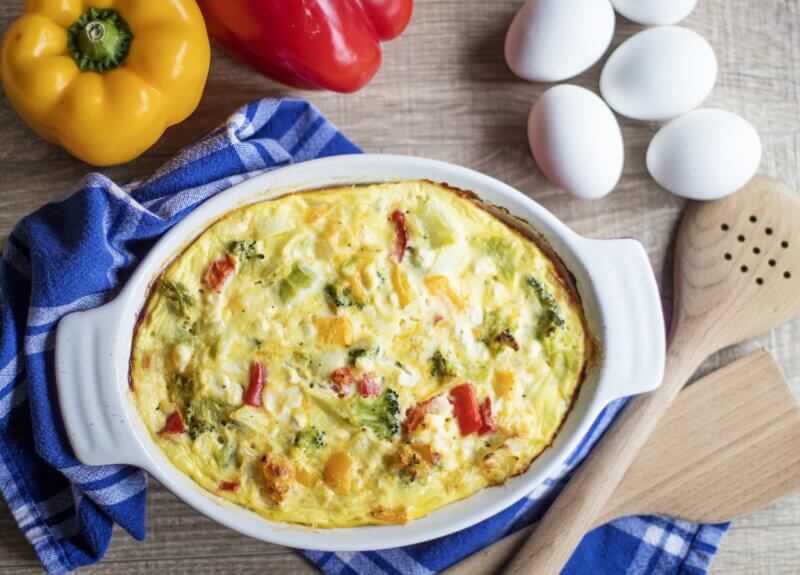Feel free to ‘quiche’ and tell about it at senior center
Don’t miss the good food and good conversation at the last Monday Munch of the year at the Charlotte Senior Center on Dec. 18.
From quiche to upside-down cake, here’s a bit of food lore that comes with the menu. Quiche, a French version of the German kuchen, “little cake,” can be thought of as a savory custard or a close relative of the omelet.
Let them eat quiche. For King Charles III’s choice for his celebratory coronation dish, the Buckingham Palace kitchen made quiche. In 1953, the last time a monarch was crowned, the official dish was coronation chicken (essentially, chicken salad dressed in curry-flavored mayo).
Dubbed “Quiche le reign,” the monarch’s choice created quite a stir. There were plenty of comments in the press and on social media, with some noting the choice seemed pretty much like what the king likes for breakfast, cheesy eggs. Before long, politics emerged. The Reform Party called the dish “foreign muck,” and the Socialist Party asked whether quiche would be available at food banks.

As far as foreign muck goes, I was surprised to note that “quiche” does not appear in “The Escoffier Cook Book.”
Search the New York Times and you’ll get 2,739 quiche hits, offering quiche with asparagus, red peppers, crab, hot sausage, cabbage and caraway, bacon and apple, tofu and mushroom and so on. Their recipe calling for half-and-half instead of milk strikes me as over the top.
Mention quiche Lorraine, and of course, Julia Child comes to mind. As always, when demonstrating this quiche preparation in her kitchen, she reassures her audience: “You can do this.” Boston public radio station WGBH maintains a Julia Child site filled with lots of sketches from her show at wgbh.org/collections/julia-child-at-gbh.
Child agreed to donate her kitchen to the Smithsonian, and in August 2002, shortly after her 90th birthday, she attended the opening of the display, copper pots and all.
My loyalty to Child goes beyond her cookbooks and those copper pots. As I related in my book, “What Happened to Recess and Why Are Our Children Struggling in Kindergarten,” in the late 1990s, armed with a National Science Foundation grant, I looked at the underbelly of corporate leaders’ strident criticisms about the way math was taught in public schools. I started with visits to math classrooms around the country, and then I sent several hundred letters to famous people, asking them half a dozen questions about the importance of math in their own lives.
None of the editors of national newspapers, all of which had run plenty of editorials about public schools, answered. Will Shortz did reply, expressing great enthusiasm for the puzzle qualities of math.
Federal Express CEO Frederick W. Smith’s reply was delivered by the U.S. Postal Service. Dave Barry reported that “for a period of approximately 15 minutes back in 1962” he knew how to do square root. At least he thinks it was square root.
Two of the loudest critics of public schools were too busy to answer. A response from Bill Gates’ e-mail address expressed regrets, as did Lou Gerstner’s office at IBM. Instead of replying, Federal Reserve chair Allen Greenspan’s office sent a long profile that had run in Dow Jones News. Hizzoner New York City mayor Rudy Guiliani seemed glad I’d asked, sending a detailed boast about how he’d used math to solve the city’s problems.
Julia Child answered all the questions (in pencil) and added several paragraphs, exclaiming, “I hated every minute of math when I was in school 75 years ago.” She also noted the usefulness of math in the kitchen.
Upside-down cake has its own story. A 1983, Scrantonian Tribune headline asked, “Who invented pineapple upside-down cake?” They noted that it’s been with us so long nobody seems to know the answer. Popular since the 1800s, the first American recipes appeared in newspaper in 1923.
In 1925, the Hawaiian Pineapple Company (later Dole) ran a contest, calling for recipes using pineapple. A panel of judges from the Fannie Farmer’s school, Good Housekeeping and McCall’s magazine rated the entries. Of the 60,000 people responding, 2,500 offered pineapple upside-down cake. Dole then ran ads featuring some of the cakes.
The New York Tines doesn’t go weird in its 920 articles featuring upside-down cake, offering recipes, sticking with all manner of fruits. In food columnist Melissa Clark’s words: “You can’t beat a classic pineapple upside-down cake.” Then she adds, “bananas are just waiting to step in.”
Take time from your busy schedules to come relax over a good meal at the Charlotte Senior Center. While you’re there, be sure to thank the volunteer cooks and dishwashers who have taken time from their own busy schedules to prepare this meal (and clean up afterwards).
As an alternative to all those carols flooding the airways, enjoy the number one song of Dec. 18, 1965: “Taste of Honey” by Herb Alpert and Tijuana Brass.
Monday Munch
Dec. 18, 11:30 a.m.-12:30 p.m.
Quiche Lorraine, haricot vert hollandaise, pineapple upside-down cake and bananas à l’envers.
Reminder: Register for the Thursday Age Well grab & go meal.
Age Well grab & go
Thursday, Dec. 21
Macaroni and cheese, carrots, peas and mushrooms, wheat roll, oatmeal craisin white chocolate chip cookie and milk.
